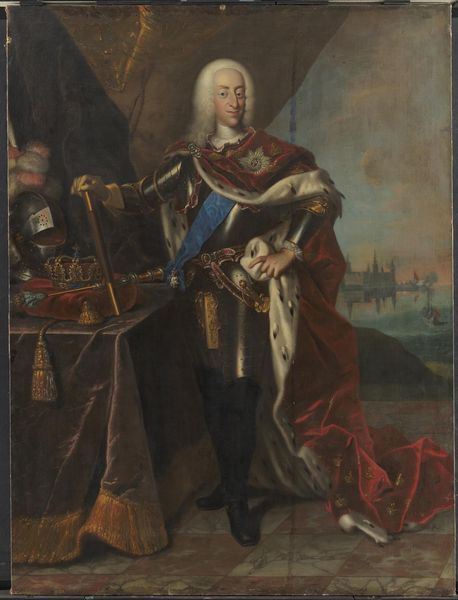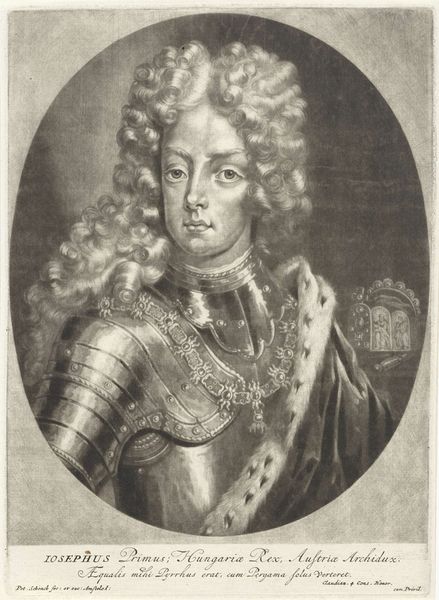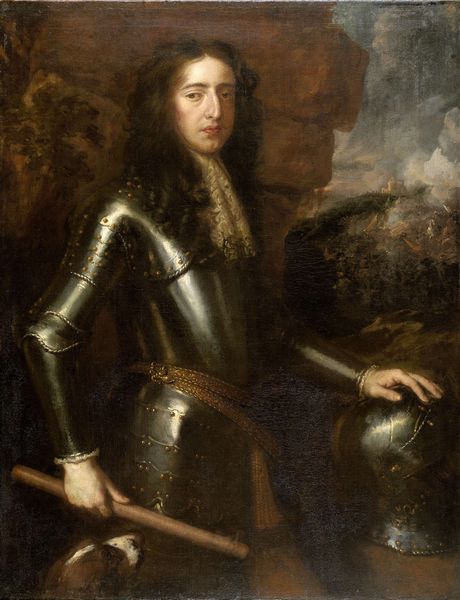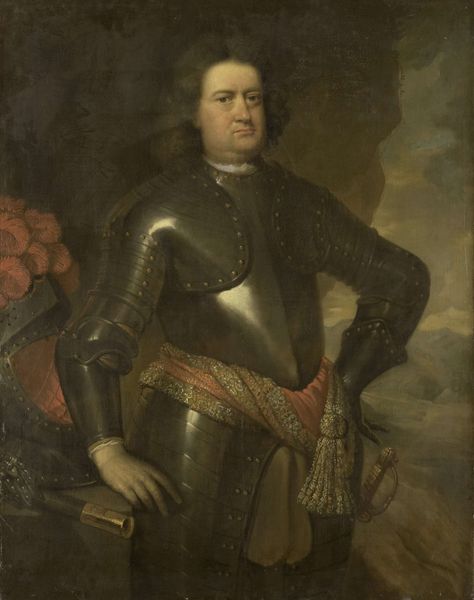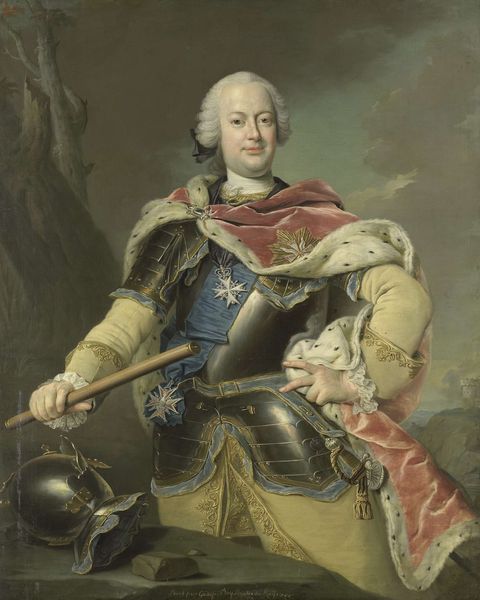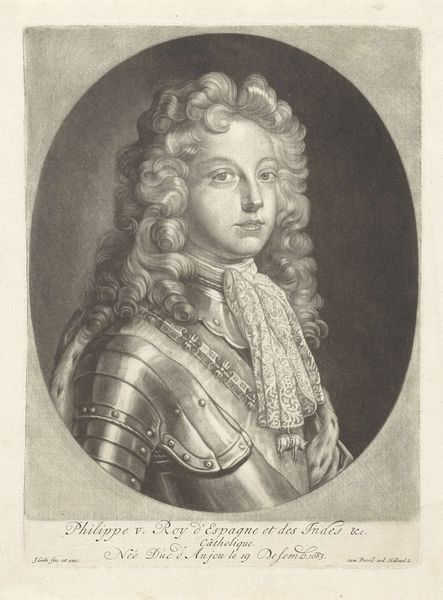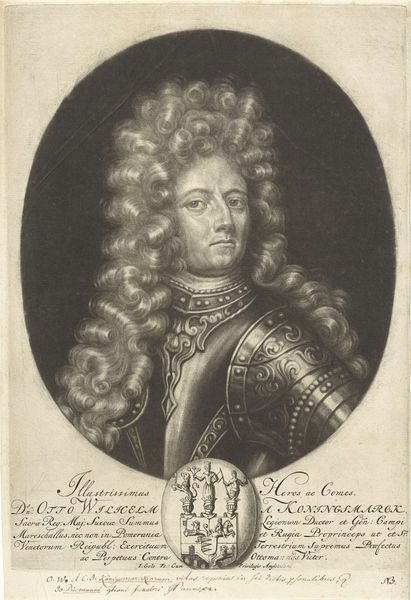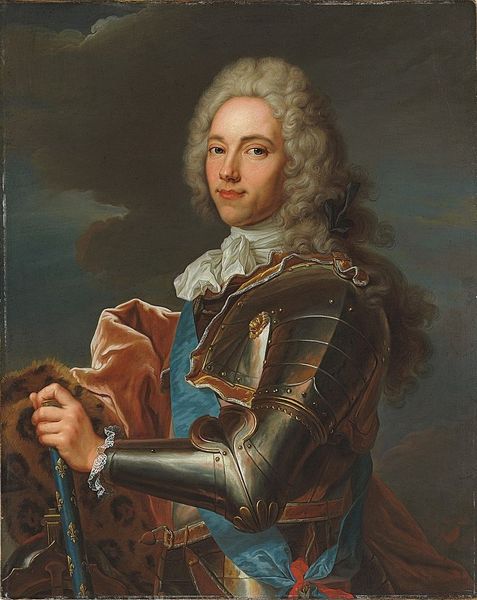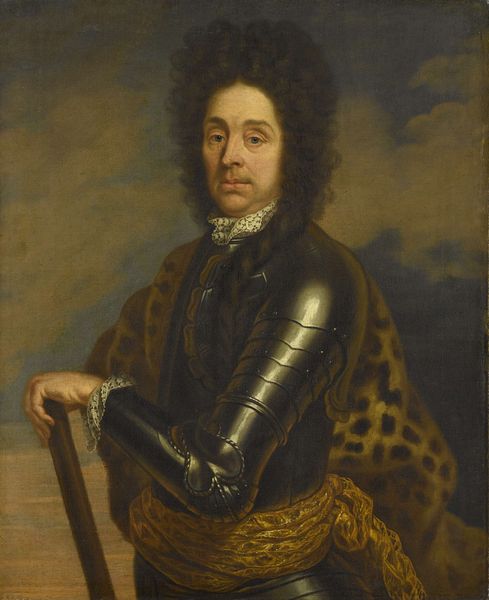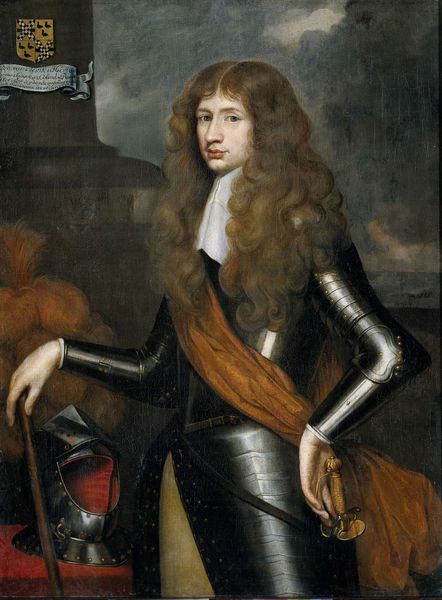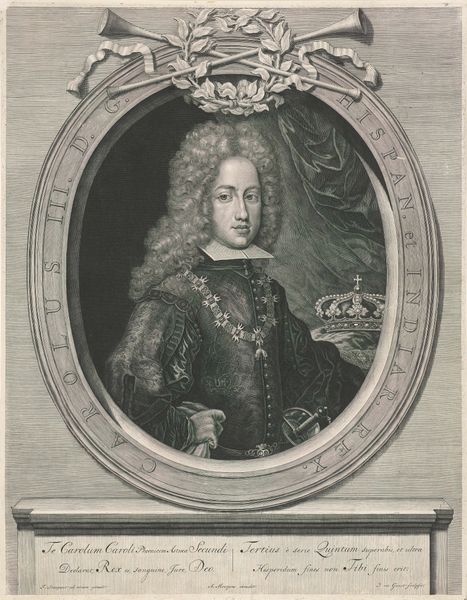
#
possibly oil pastel
#
portrait reference
#
portrait head and shoulder
#
underpainting
#
animal drawing portrait
#
portrait drawing
#
facial portrait
#
portrait art
#
fine art portrait
#
digital portrait
Dimensions: height 55 cm, width 44 cm, depth 8 cm
Copyright: Rijks Museum: Open Domain
Curator: Take a look at this commanding portrait. Painted around 1720, this artwork immortalizes Hendrik Lijnslager, a sea captain with the Admiralty of Amsterdam. Editor: The overall impression is one of somewhat theatrical restraint. The dark, glossy armour and creamy wig frame a pale face. I wonder about the tonal balance. Curator: The armor worn in the portrait holds potent symbolism. By donning the garb of a warrior, Lijnslager aligns himself with ideals of courage, duty, and strength, virtues highly prized within the Dutch maritime world. It’s a clear projection of power, linking personal identity with the cultural narrative of Dutch naval dominance. Editor: Precisely! The artist utilizes a fairly limited palette to render various textures and a subtle push-and-pull. See the interplay between the solid metallic surfaces and the soft, almost cloud-like wig? The composition really drives the eye upward to the subject's face. Curator: Yes, notice how the seascape peeks out from behind, framing Lijnslager? This background acts as a symbolic reinforcement of his profession and stature. The ship sailing away conjures Dutch maritime power and connects his image to national pride. Editor: Indeed. However, observe that it's also painted in broad, rather undefined strokes, which paradoxically gives a sense of depth, whilst allowing the artist to center on the detail of the captain's garb, specifically how the fall of light informs the portrait’s overall impact. It's this type of technical facility that marks the era. Curator: To consider the implications, Hendrik Lijnslager and others had become significant players in the global narrative. The Admiralty wasn't just a fleet, it represented Amsterdam's financial and military reach extending across oceans and shaping international relations. Editor: It is also a reflection of period art conventions; these idealized heroic likenesses were quite popular. It gives this painting the somewhat impersonal, stagey affect that I remarked upon initially. Curator: This portrait tells the story, of course. It goes beyond simply depicting a sea captain; it visualizes Dutch identity. Editor: Seeing how technical artistry enhances symbolic value has altered how I view this composition, bringing new meaning.
Comments
No comments
Be the first to comment and join the conversation on the ultimate creative platform.
